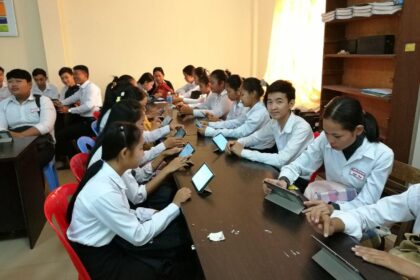
Based on the five pillars of the ADB EdTech Readiness Framework, this report describes the current situation of education in Cambodia in general, with a specific focus on how EdTech is being implemented to improve the quality of teaching and learning. The five pillars of the framework include infrastructure, government, schools/teachers, parents/students, and EdTech providers. By identifying the existing status of EdTech readiness in Cambodia using this framework, the report seeks to provide evidence against which decision-makers can identify initiatives likely to make a positive contribution to the quality of the education ecosystem and opportunities for public-private partnerships. Cambodia had a population of 16.83 million people in January 2021 (51.2% of Cambodia’s population is female) and 8.86 million internet users in January 2021, giving it a 52.6% internet penetration rate1 . In 2021 Cambodia had 12.00 million social media users (equal to 71.3% of the population). Cambodia is ranked 106th out of 130 economies in the Network Readiness Index (NRI) 2021, with impact (quality of life) as its key strength and governance as its main weakness (trust). An account of the gender gap in EdTech is included in Annex 3) of this report. In brief its findings are that the Royal Government of Cambodia is committed to gender equality and over the past five years the proportion of women who are in the workforce has increased by 5% to 84%; but female’s opportunities in EdTech are largely limited by cultural and family beliefs and values that see EdTech as being a male dominated field. Notwithstanding this, in Upper Secondary Schools the proportion of girls remaining is education is higher (54%) than boys (46%) and girls are increasingly opting for STEM subjects – though they are then more likely to follow science than technology options at university. More women are now becoming self-employed (65% of all SMEs are now owned and run by women) and their skills in using online eCommerce opportunities is a critical success factor here. In general women teachers have lower EdTech skills than men and lower levels of digital literacy. Although in general, across the country, smartphone ownership is high, rural women are the least likely segment of the population to own a cellphone.


